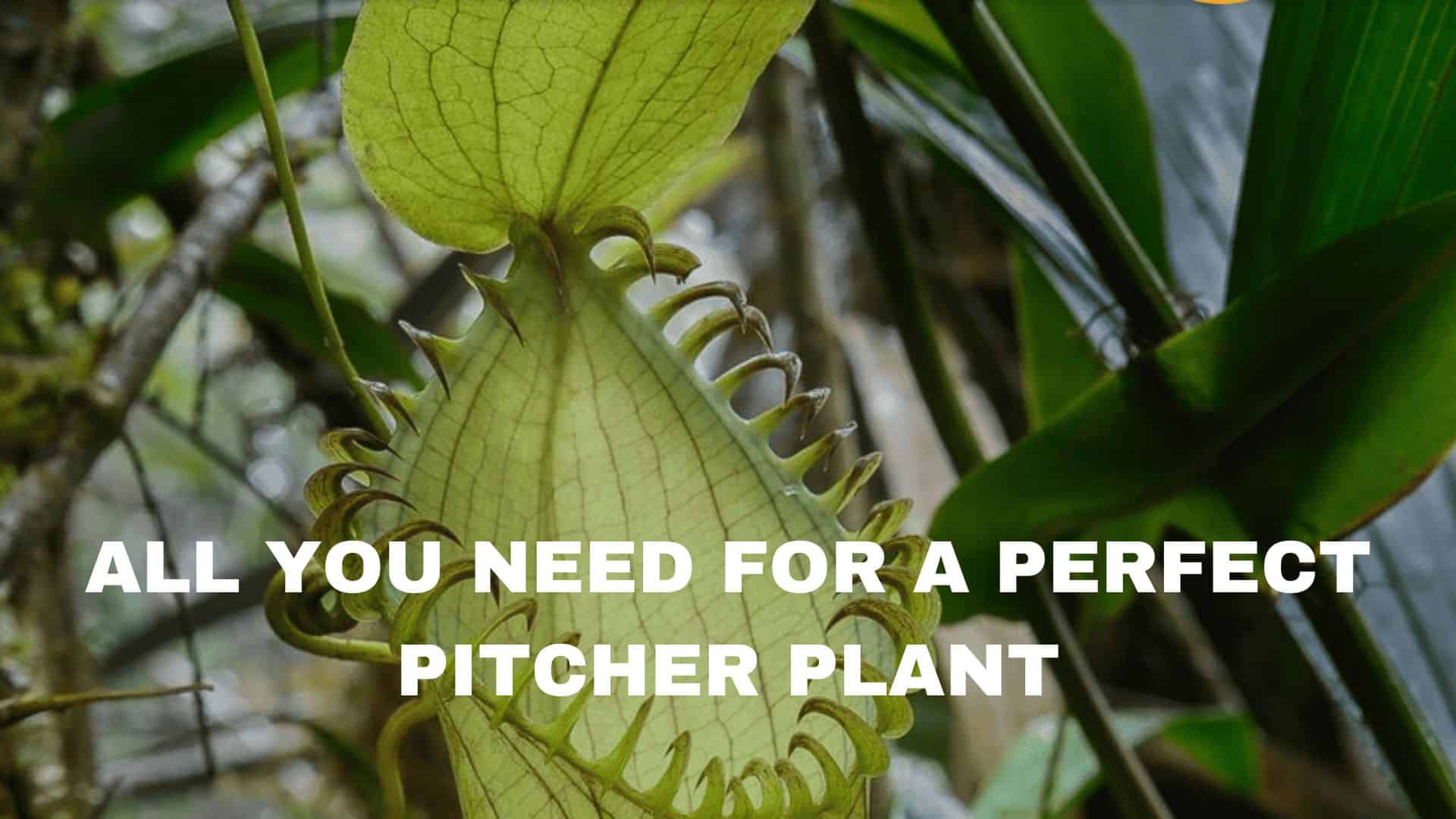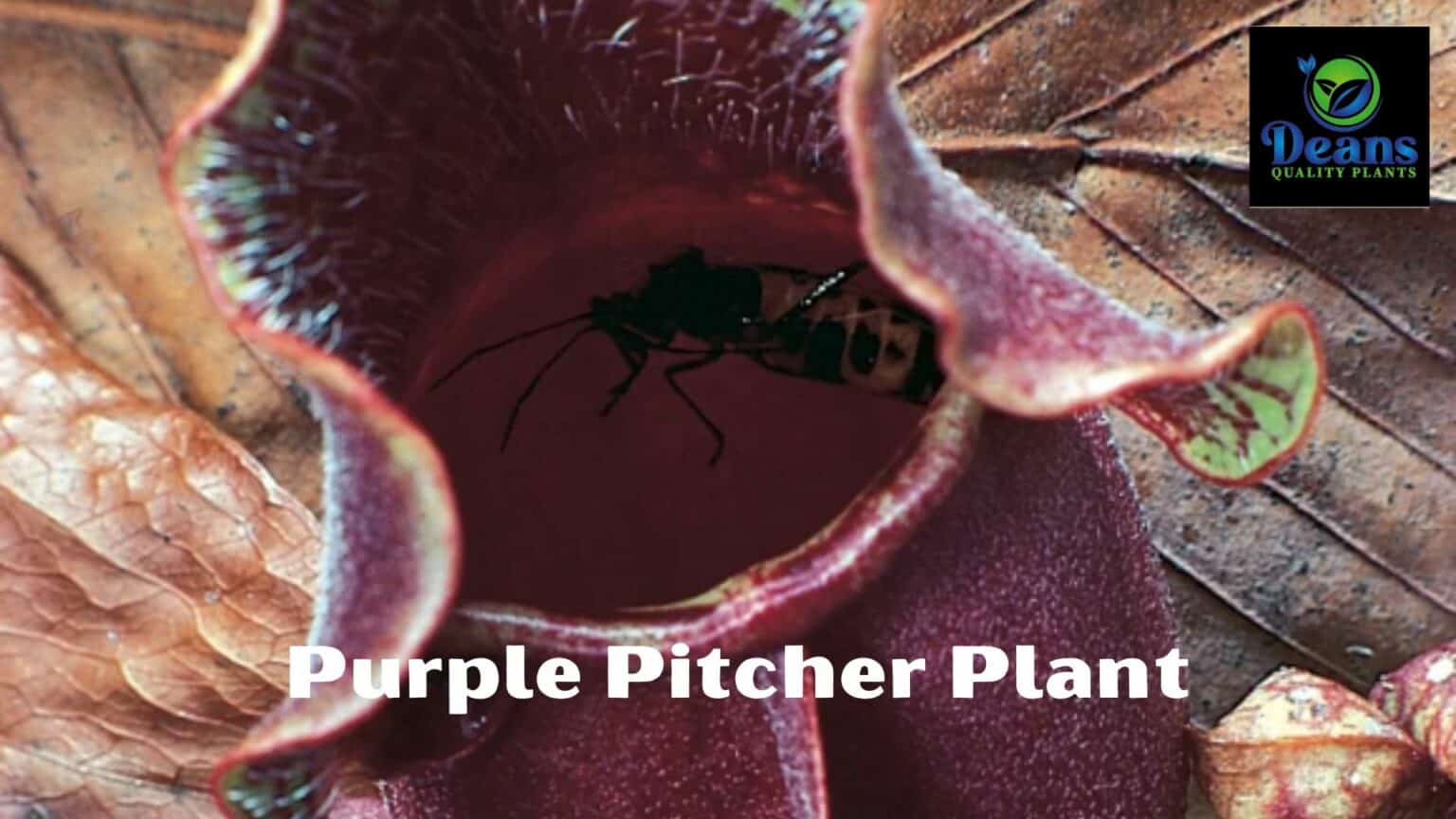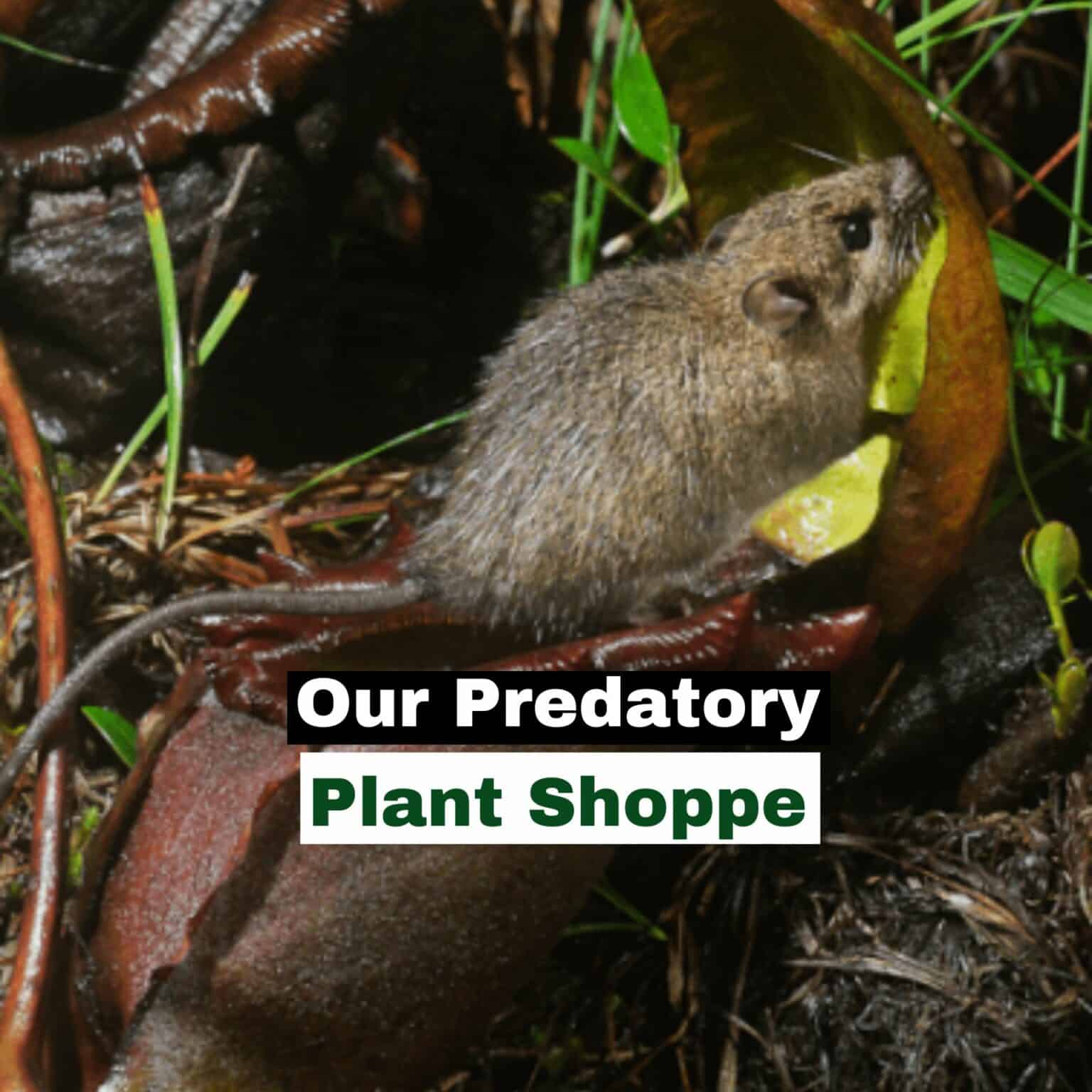All You Need for a Perfect Pitcher Plant
Home » Carnivorous Plants » All You Need for a Perfect Pitcher Plant

All You Need for a perfect Pitcher Plant Success: A Guide to Starting Your Botanical Journey with Maintenance Tips and Plant Choices. Calling all fearless spirits! Our pitcher plants are the life of the party, and they want you to join them. These plants have developed a subtle yet powerful allure to trick their prey into entering their dangerous territory. With this in mind, the surprising arrival of insects, tiny birds, lizards, and even the odd rodent in their pitcher-like chambers may provide for an exciting display. It’s like watching a nature documentary, only in the comfort of your own home!
The video below will demonstrate how fascinating it is to see the Pitcher Plant in action. Then, we’ll show you the many kinds and explain how to care for them, as well as recommend the best container, lighting, and overall option.
Video: The Pitcher Plant In Action
An Overview of the various types of Pitcher Plants
- Nepenthes: In order to thrive, only a select few Nepenthes species need special conditions like a grow room or well-ventilated terrarium. However, they are costly to maintain and develop, so if you’re just getting started with Nepenthes, one of the numerous varieties that does well as a houseplant is a good choice. Often referred to as “monkey cups” or “pitcher plants,”
- Sarracenia: Grows best in acidic, continuously wet soil with full sun to light shade. Use water without lime and no fertilizer should be used for irrigation. Keep out of the sun’s rays. In most cases, they are healthy.
- Darlingtonia: Throughout Northern California and Western Oregon, you may find all you need for a perfect conditions for the growth of Darlingtonia californica: sunny, moist regions near streams or bogs. Even though Darlingtonia californica doesn’t need serpentine soil to grow, it can grow in it and can even handle soil with heavy metals or harmful chemicals. The rare, strange-looking plant is the only naturally grown pitcher plant (Sarraceniaceae) in Oregon. It is also called a cobra lily.
All you need to Know About Getting the Best Pitcher Plant Possible
Pitcher plants may be broken down into seven different genera: Nepenthes, Sarracenia, Darlingtonia, Heliamphora, Cephalotus, Brocchinia, and Catopsis. Only nepenthes and sarracenia should be attempted by those with no prior experience.
By all means, choose one depending on the circumstances it will be exposed to; for example, highland nepenthes like warm but not hot temperatures, whereas lowland nepenthes prefer hot and humid temperatures, since they are not connected to each other in any way. Dormancy is not required for any of them. If you can’t give your sarracenias a winter rest, consider switching to nepenthes instead. Both are possible to cultivate outdoors in California, but nepenthes must be kept inside.
We have included a link to our online store where you can purchase the following all you need for carnivorous plant grow shop: When you purchase through links on this site we may earn a commission at no extra cost to you.
This helps us provide free content for you to enjoy. For this reason, here are several ways you can help Deans Quality Plants thrive and continue to provide you with entertaining and informative content on cultivating plants of the highest possible standard.
The following are our top three carnivorous pitcher plants:
Darlingtonia californica
| Sold And Shipped By | Predatory Plants |
| Description | Sphagnum moss plugs with 3" plastic pots and high-quality New Zealand long-fiber moss will be supplied with this plant. |
| Our Rating | 9/10 |
Darlingtonia californica, more often known as the cobra lily, is a beautiful and intriguing plant that is highly sought after by collectors. Although D. californica is linked to Sarracenia, their bulbous, semi-transparent hoods distinguish them. Growing and planting instructions will be supplied as well.
Cultural Conditions:
Light:Full sun (6 or more hours of direct sunlight a day)
Soil Texture:High Organic MatterSoil pH:Neutral (6.0-8.)Soil
Drainage:Frequent Standing Water Moist
USDA Plant Hardiness Zone:7a, 7b, 8a, 8b, 9a, 9b, 10a, 10b
This carnivorous plant flourishes under artificial indoor lighting.
All You Need For A Perfect Sarracenia 'Dana's Delight'
| Sold And Shipped By | Predatory Plants |
| Description | In 2009, Josh Brown created Predatory Plants as a side project at Microsoft in Silicon Valley. He marketed greenhouse-grown carnivorous plants at farmer's markets and online. Predatory Plants is now a leading US carnivorous plant company. |
| Our Rating | 9/10 |
Pink and purple lines illuminate tall, elegant traps of this American pitcher plant hybrid. Significantly, their best plants shine in strong sunshine. ‘Dana’s Delight’ Sarracenia will be supplied bare-root in a 3″ plastic pot with adequate high-quality New Zealand long-fiber sphagnum moss. All you need to grow and plant a successful will be provided.
As soon as you have your Sarracenia pitcher plants:
- If your plants arrived bare-root, remove them carefully from their packaging and soak them for 15 to 30 minutes in distilled water, collected rain water, or reverse osmosis water (not tap water; it can damage the roots of Sarracenia). If you don’t have distilled, reverse osmosis, or rain water, put the plant(s) in the bag out of direct sunlight until you can get pure water, then open the bag for a fresh air change before sealing it.
Compost for plants:
- First, plant them in a combination of 50% pure sphagnum peat moss and 50% silica sand or perlite until you find out what other planting medium will also work. If you don’t have access to sand that is almost pure silica (river, beach, desert, or sandbox “play” sand, but sandblasting or pool filter sand), then you may use perlite. Avoid Miracle-Gro sphagnum peat moss and perlite, which are “enriched” with plant food that kills Sarracenia. Here at Dean’s Carnivorous and Predatory Plants, we sell Sarracenia planting soil if you can’t locate any other acceptable medium for your plant in your area.
Container for plant growth
- Second, avoid planting Sarracenia in terrariums or other clear containers with sides that extend several inches or more above the potting medium “soil,” unless you plan to grow them completely out of direct sunlight with only fluorescent or other “grow lights” because direct sunlight entering through the clear sides can quickly heat both the soil and the air around the plant, causing roots and leaves to shrivel.
Planting pots with a drainage hole and a depth of at least 4 inches, preferably 6-8 inches, should be glazed ceramic, plastic, or insulating polyurethane foam. Plant them so that the roots are entirely submerged and the rhizome or “bulb” is largely covered in the planting media, leaving the pitchers and top exposed. It’s important to leave part of the top of the stem visible so that sunshine can reach it and encourage pots to grow. If you want to learn how to properly pot a Sarracenia, watch this video. Pitcher plant care for Sarracenia, including video instructions.
Check out our page for additional details on the ideal moss for your carnivorous plants. The Three Best Types Of Sphagnum Moss For Your Plants
By watching this video, you will find out all you need to know for a perfect Pitcher Plant -a Sarracenia potting experience.
The water you need for the perfect Sarracenia
- Water from rain, distillation, or reverse osmosis should be used exclusively. Water quality is crucial for sarracenia. There may be too much dissolved solids (minerals and salts) in your tap water to keep a Sarracenia alive for more than a few weeks. Sarracenia need constant moisture.
That is to say, the medium may be soaked up with water from the bottom via the drainage hole or properly watered from the top. This is achieved by immersing the pot in a tray of water. It is not recommended to keep Sarracenia excessively damp, particularly during dormancy, although they may be maintained wetter than Venus Flytraps. Wet Sarracenia plants thrive when placed in direct sunlight in a warm environment. Like with humans, wet and cold environments are detrimental to health, increasing the risk of developing a variety of unpleasant and perhaps fatal conditions.
A State Of Dormancy
- Every year, sarracenias need a dormant period of a few months. Plants slow down their growth when the days become shorter and colder in the fall. Before going into dormancy, several species of Sarracenia, including the leucophylla and leucophylla hybrids, produce their most beautiful pitchers. Sarracenia needs chilly temperatures throughout its dormant period. Light frosts and short freezing are okay for the plants, but it’s best to maintain them above freezing:
They should be chilly to cold most of the day, and 40°F to roughly 55°F degrees at night is appropriate cooling. For the vast majority of us, an unheated garage or porch will do. At this point, because plants consume so little water while dormant, sarracenias should be watered considerably less often.
A lot of the pitchers will go brown while they’re hibernating. Until then, any brown pitchers may be left until about March, at which point they should all be removed. By removing the dead, brown pitchers, you may stimulate the formation of new pitchers by exposing the rhizome to sunlight. Your pitcher plant will flourish when you return it to warmer temperatures and give it more regular waterings once spring comes.
- Get going now!
All you need for a perfect, healthy and happy crop of Sarracenia pitcher plants is within your reach if you adhere to the aforementioned advice.
| Sold And Shipped By | Predatory Plants |
| Description | Our one-of-a-kind, high-quality plants are sold online, at Deans Quality Plants, on Amazon.com, at our Half Moon Bay, California retail shop, and at other local Bay Area nurseries. |
| Our Rating | 9/10 |
This time we’re utilizing a female Nepenthes truncata that has attractive red stripes on her peristome to cultivate our seeds.
It’s a must-have for any lowland/intermediate level collection! This plant will arrive in a 3″ plastic pot with enough high-quality New Zealand long-fiber sphagnum moss to fill it, as well as a sphagnum moss plug. You will also be supplied with an all you need for the perfect information guide with your order to have the proper knowledge of how to plant and care for your plant. Care for your Nepenthes so that they thrive
Taking Your Sarracenia Out of the Box and Planting It.
- First, carefully remove any wrappings and immerse the whole plant (leaves and roots) in distilled water, collected rain water, or reverse osmosis water (never tap water!) if they were delivered bare root. For around 15 minutes up to half an hour, soak the Nepenthes.
Second, in the absence of clean water (such as that obtained by distillation, reverse osmosis, or rain collection), it is sufficient to just keep the plant(s) in the bag in a dark location out of direct sunlight until you can collect some. Occasionally, you should unzip the bag to let in some air before sealing it again.
Container for plant growth
- Plant your Nepenthes in a container with good drainage. A plastic container with drainage holes is ideal for this purpose. Because, they cannot tolerate moist soil or water near their roots and should never be planted there. Nepenthes may thrive in shallow containers of 3.5 inches until they become too top heavy and overflow their container.
- You should choose a pot that has good drainage for your Nepenthes. At this point, a plastic container with drainage holes is ideal for this purpose. Because of this, they cannot tolerate moist soil or water near their roots and should never be planted there. Nepenthes may thrive in shallow containers of 3.5 inches until they become too top heavy and overflow their container.
- Hanging baskets filled with Nepenthes bloom beautifully and prosper. They should be planted with their roots below the surface of the soil and their leafy tops exposed.
- Definitely, don’t use tap water; only rainwater, distilled water, or water purified by reverse osmosis. Keep your Nepenthes damp, but not dripping wet or bone dry. The medium should be kept wet, but the plant should never be allowed to sit in water.
- As a matter of fact, this clearly differentiates the Nepenthes pitcher plants from the related Sarracenia pitcher plants.

All You Need for a Perfect and Fruitful Growing Medium
- Soil that is low in nutrients and somewhat acidic is ideal for nepenthes. Most likely, they will die if you place them in “potting soil” or dirt from your garden or yard. Soil conditions should mimic those found in their native environment, which is acidic, nutrient-poor, moisture-retentive, and highly well-drained.
- Only, use pure long-fibered shagnum moss (no other sort of “moss”) combined with a more or less equal quantity of perlite until you discover what kinds of components you may have in their soil (through study, for example on the Internet or in books).
- The quantity of sunshine a Nepenthes requires varies greatly from one species to the next. Most Nepenthes thrive under a mixture of bright indirect light and direct sunlight, making grow lights and artificial indoor illumination ideal for their cultivation. Come on in, there are plenty of shops for you to investigate, or send an email to Dean’s Quality Plants if you have any questions concerning the lighting needs of your Nepenthes.
Fertilization: All You Need To Know For A Perfect Pitcher Plant

- No! Absolutely not.
- Beginner growers are likely to kill their Nepenthes plants by fertilizing them, for the same reason they typically die from tap water: too many minerals and chemicals. Experienced growers, on the other hand, can occasionally fertilize Nepenthes lightly using special techniques like foliar feeding or adding diluted fertilizer to their pitchers. The plants’ roots will be scorched and killed by them.
- Nepenthes get all the food they need from the sun (through photosynthesis, like all plants) and the bugs they catch. They may be given captured insects like flies (but not meat) as a source of protein.
- The journey has begun! Following the aforementioned advice will put you well on your road to successfully cultivating Nepenthes pitcher plants.
Carnivorous plants: mystery or science? The intriguing topic of carnivorous plants is the subject of yet another article, titled WHY THESE PLANTS WILL BITE YOU. Can you have a look at it?

Finally, all you need to know for a perfect plant comes to a close
In the fascinating world of carnivorous plants, the pitcher plant reigns supreme. We’ve uncovered all you need for a perfect pitcher plant, from the subtle tricks these captivating plants use to lure unsuspecting prey into their perilous chambers to the care and selection process that will make you a successful pitcher plant enthusiast.
Whether you choose the elegant Cobra Lily, the striking Sarracenia ‘Dana’s Delight,’ or the unique Nepenthes Truncata, one thing is clear: these plants are truly extraordinary. They offer a front-row seat to nature’s drama right in the comfort of your own home.
But remember, these plants have their own needs. From the soil they grow in to the water they drink, they’re a bit picky. So, choose your pitcher plant wisely and follow our expert advice, and you’ll be well on your way to creating a thriving pitcher plant paradise.
So, what are you waiting for? Dive into the world of carnivorous plants, and let your pitcher plant adventure begin! All you need for a perfect pitcher plant is right here, ready for you to explore. Happy growing!
Check out our blog article on INDOOR TREES AND LARGE TROPICAL PLANTS for more inspiring indoor plant options.
Where to get unusual and beautifully crafted goods? Pick up a cup of Joe and go around the shopping center we've got here.
Increased Fun Through the Use of Plants
Hopefully, these articles will pique your interest in carnivorous plants and lead you to continue reading and learning:










